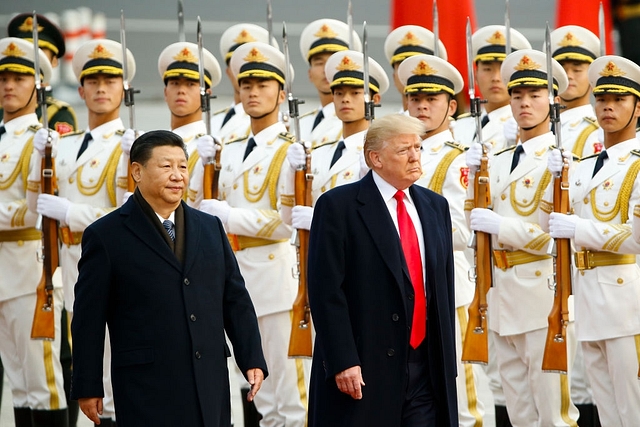
Specter Of Trade War Looms As Trump Hits China With Tariff And China Retaliates
World merchandise trade is set to face its biggest controversy yet, post WTO, with China threatening to retaliate against US trade sanctions on its products by coming out with a list of 128 items exported by Washington.
A US-China trade war looks imminent and markets across the world are falling.
In a ‘first of many’ trade actions, United States (US) President Donald Trump yesterday (22 March) signed an executive memorandum to impose tariffs on Chinese products valued at around $60 billion.
On 9 March, Trump has signed another executive order imposing 25 per cent customs duty on steel imports and 10 per cent levy on aluminium shipments. At that point, indications were that a trade war looked imminent. Trump had earlier demanded that China should come up with a blueprint to slash the US $375 billion trade deficit with China by $100 billion.
The new US measures will however primarily target products in the technology sector in which Beijing enjoys an advantage over Washington. The daring strike at Beijing has the potential to spark off an expensive trade war with the world’s second-largest economy.
The fresh salvo of tariffs comes in the wake of investigation by US Trade Representative Robert Lighthizer. In August last year, Trump had directed Lighthizer to investigate China’s laws, policies, practices, or actions that may be unreasonable or discriminatory and that may be harming American intellectual property rights, innovation, or technology development.
The investigation, among other things, established that
1. China used foreign ownership restrictions, including joint venture requirements, equity limitations, and other investment restrictions, to require or pressure technology transfer from US companies to Chinese entities.
2. China imposes substantial restrictions on, and intervenes in, US firms’ investments and activities, including through restrictions on technology licensing terms.
3. China directs and facilitates the systematic investment in, and acquisition of, US companies and assets by Chinese companies to obtain cutting-edge technologies and intellectual property
4. China conducts and supports unauthorised intrusions into, and theft from, the computer networks of US companies.
China hit back immediately with its Commerce Ministry proposing a list of products for potential retaliation, reported CNBC, pointing out to a statement on the ministry’s website. The goods, including pork, fruit and recycled aluminium, steel pipes, dried and fresh fruit besides modified ethanol, were valued at $3 billion last year. The ministry’s proposal can result in a 15 per cent import duty on wine, fresh and dried fruits, nuts and steel pipes, while pork and recycled aluminium can attract 25 per cent duty.
The threat of a trade war led to a pounding of the Asian markets at the opening on Friday morning as investors looked for safer bets. Bonds and gold gained, while the Japanese yen hit a record against the US dollar. Japan’s Nikkei fell 3.5 per cent, while Hong Kong’s Hang Seng slipped 3.11 per cent.
The Chinese Commerce Ministry, however, did not dwell in great detail. For the US, soybean, which has a huge market in China, can be a big area of concern and could be one of the harshest measures for the Xi Jinping’s administration to hit back at the US.
Beijing has said it would also drag the US for action under the WTO rules. CNBC quoted experts as saying that the Chinese reaction was “relatively measured”. For China, the US sanctions are almost a third of its exports to Washington. This year, its exports are expected to touch nearly $175 billion.
The Chinese Commerce Ministry has, for now, urged the US administration to resolve the issue instead of harming bilateral trade between both countries.